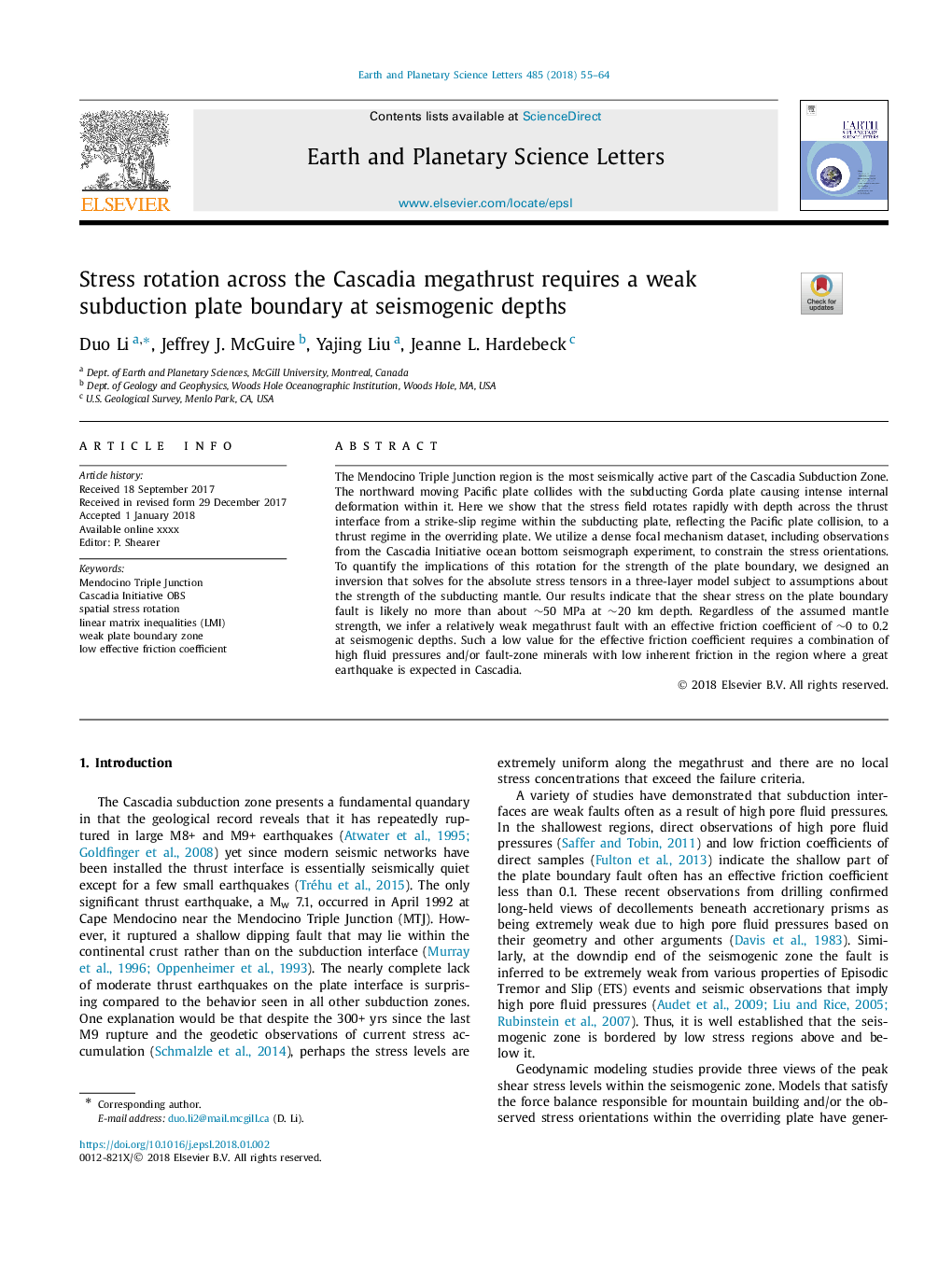| کد مقاله | کد نشریه | سال انتشار | مقاله انگلیسی | نسخه تمام متن |
|---|---|---|---|---|
| 8907121 | 1634671 | 2018 | 10 صفحه PDF | دانلود رایگان |
عنوان انگلیسی مقاله ISI
Stress rotation across the Cascadia megathrust requires a weak subduction plate boundary at seismogenic depths
دانلود مقاله + سفارش ترجمه
دانلود مقاله ISI انگلیسی
رایگان برای ایرانیان
کلمات کلیدی
موضوعات مرتبط
مهندسی و علوم پایه
علوم زمین و سیارات
علوم زمین و سیاره ای (عمومی)
پیش نمایش صفحه اول مقاله

چکیده انگلیسی
The Mendocino Triple Junction region is the most seismically active part of the Cascadia Subduction Zone. The northward moving Pacific plate collides with the subducting Gorda plate causing intense internal deformation within it. Here we show that the stress field rotates rapidly with depth across the thrust interface from a strike-slip regime within the subducting plate, reflecting the Pacific plate collision, to a thrust regime in the overriding plate. We utilize a dense focal mechanism dataset, including observations from the Cascadia Initiative ocean bottom seismograph experiment, to constrain the stress orientations. To quantify the implications of this rotation for the strength of the plate boundary, we designed an inversion that solves for the absolute stress tensors in a three-layer model subject to assumptions about the strength of the subducting mantle. Our results indicate that the shear stress on the plate boundary fault is likely no more than about â¼50 MPa at â¼20 km depth. Regardless of the assumed mantle strength, we infer a relatively weak megathrust fault with an effective friction coefficient of â¼0 to 0.2 at seismogenic depths. Such a low value for the effective friction coefficient requires a combination of high fluid pressures and/or fault-zone minerals with low inherent friction in the region where a great earthquake is expected in Cascadia.
ناشر
Database: Elsevier - ScienceDirect (ساینس دایرکت)
Journal: Earth and Planetary Science Letters - Volume 485, 1 March 2018, Pages 55-64
Journal: Earth and Planetary Science Letters - Volume 485, 1 March 2018, Pages 55-64
نویسندگان
Duo Li, Jeffrey J. McGuire, Yajing Liu, Jeanne L. Hardebeck,